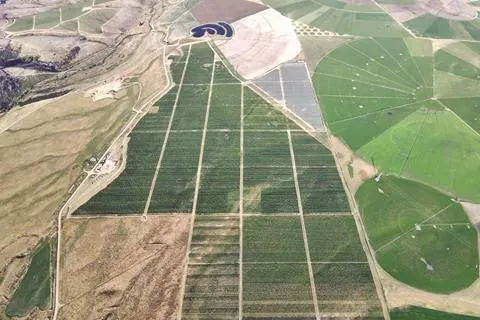
Juan Pablo Zoffoli - Pontificia Universidad Católica del Chile
Cherry Times Scientific and Technical Committee
World production of sweet cherries has steadily increased in recent decades. The introduction of many new cultivars and the development of new, more intensive cultivation systems attest to this reality. The market recognizes a number of key quality characteristics for cherries: a brightly colored fruit with a strong "cherry" flavor on a green, turgid stalk.
Several new post-harvest technologies have been developed to extend the fruit's shelf life and thus enable export of cherries by ship to more distant markets. The adoption of some of these technologies has allowed cherries to be stored for 35-45 days (depending on variety) enabling, for example, Chile to ship cherries to China.
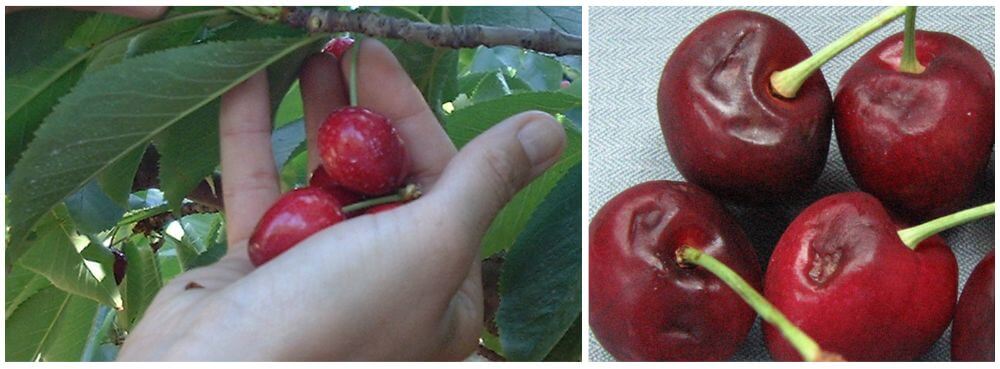
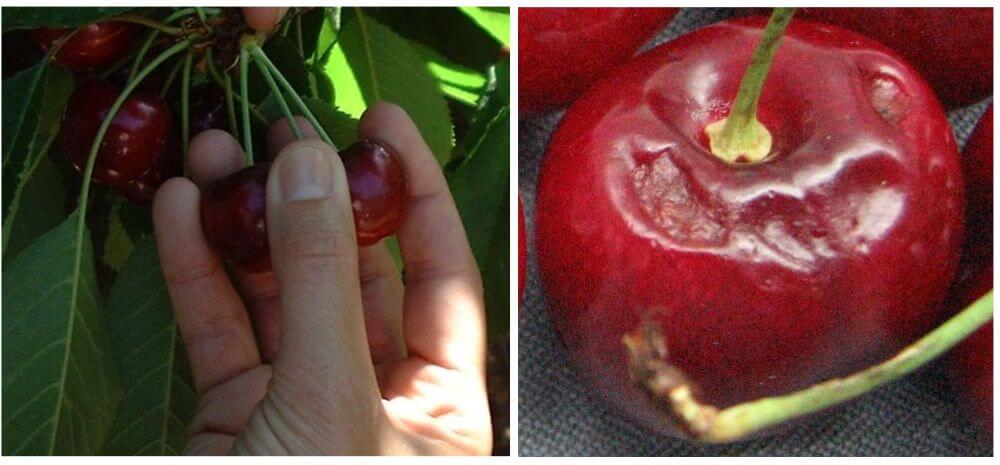
Fig. 1-High sensitivity to mechanical damage can induce surface pitting.
Sweet cherries deteriorate rapidly after harvest. This is due to several factors, including high respiration rate, extreme tissue sensitivity to physical damage and pathogen infection. At the same time, the stalk is subject to water loss and thus shriveling and browning.
Under uneven storage temperatures, decay is the main cause of fruit loss. Pathogen infections occurring in the pre-harvest stage cannot be controlled by post-harvest treatments.
Infection is caused and/or enhanced during the sorting/packing/storage stage by contaminated water (usually used for hydrocooling or moving fruit during processing) or condensation in the packages. Therefore, the water requires strict disinfection.
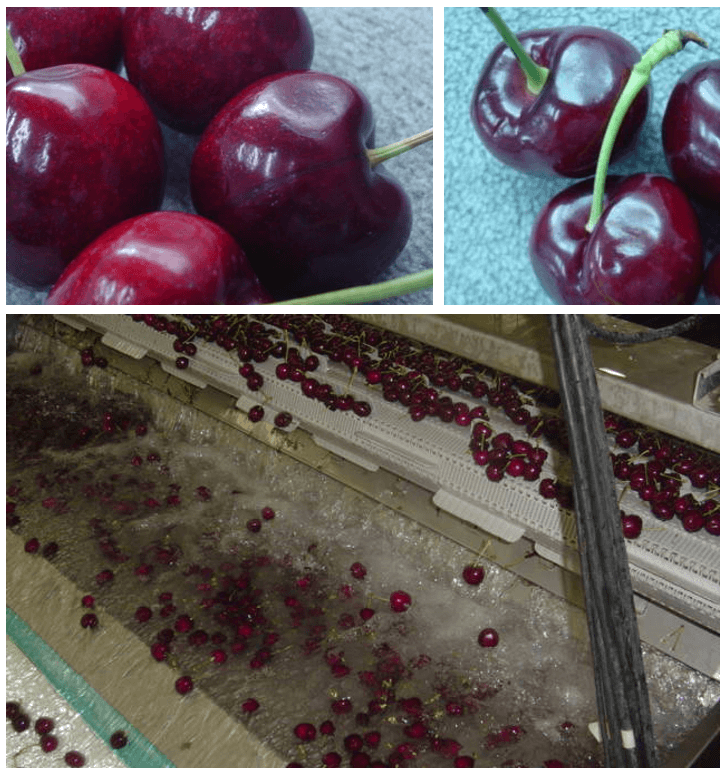
Fig. 2 - Damage caused by insufficient amount of water used in transits during processing.
Alternatives to chlorine for this purpose include chemicals such as peracetic acid (PA). Depending on the formulation, the broad pathogen control described for PA sometimes conflicts with the phytotoxicity it induces on the fruit stalk.
In addition, film materials that reduce water loss in cold storage are risky under fluctuating temperatures when condensation forms rapidly. This is especially a problem when ventilation is poor. Macro and micro perforation of the films used can promote water vapor permeability of these materials in the packages.
The tissues of sweet cherries are very sensitive to mechanical damage from impact and compression. These soon lead to symptoms described as "surface pitting." These symptoms worsen the aesthetic appearance of the fruit and create access points for infection by pathogens.
This "pitting" usually appears in the first ten days of storage, and susceptibility to "pitting" is related to the strength and deformability of the tissue and is very much related to variety (Figures 1 and 2).
Fruit firmness is a useful measure of fruit resistance to mechanical damage, so good firmness is a desirable characteristic in new varieties of sweet cherries, since these types of fruit are generally more resistant to compression damage.
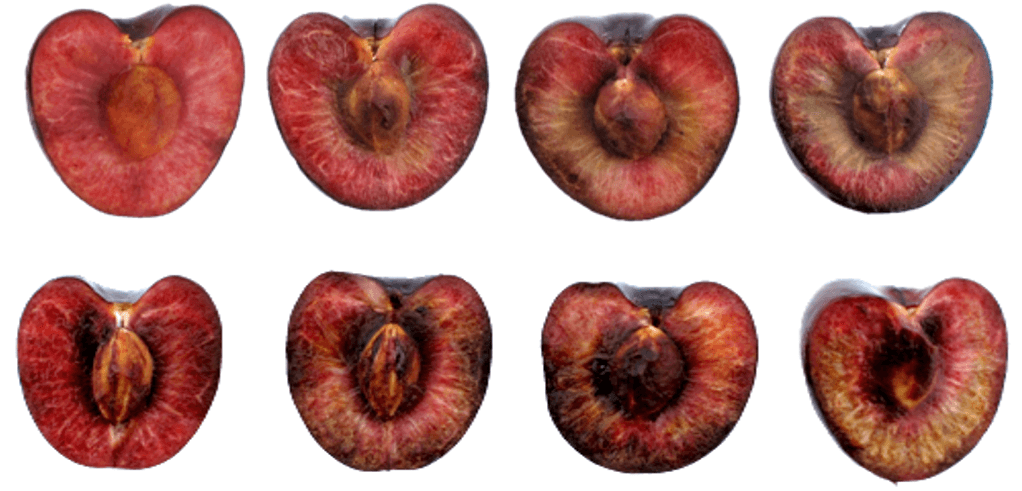
Fig. 3 - Internal browning in cv. Regina developed in 35 days at 0° C
However, a balance is needed, as some degree of deformability also contributes to resistance to impact damage. A cultivar's susceptibility to physical damage is critical in dealing with the rigors of harvesting, postharvest handling, and packing.
Careful assessment of handling damage associated with pitting can indicate critical points in the postharvest chain where damage occurs, thus enabling particular mitigation actions, including efficiency improvements or specific changes in packaging line design.
Various pre-harvest chemical treatments, such as applications of gibberellic acid or calcium or other bioactive chemicals used to manage crop load or increase resistance to rain splitting, can have different results depending on the variety
Physiological disorders can be defined as alterations in the normal physiology of the fruit, induced by abiotic stresses. Thus, rainfall during fruit ripening induces preharvest fruit cracking and also increases the incidence of postharvest cracking in the moist environment of a fruit package.
There are various other post-harvest physiological disorders, such as "orange peel" (also called "pebbling" or "alligator skin") or "internal browning," which affect fruit quality and thus consumer acceptance and market value. The "orange peel" phenomenon develops on the surface of the fruit in the form of rough patches, but without affecting the flesh. The fruit has a dull appearance, similar to old tissue.

Fig. 4 - Orange peel, a physiological disorder in postharvest.
Internal browning, on the other hand, is a physiological disorder that affects the appearance of the flesh and gives it a "dull flavor" that makes the fruit unmarketable. The development of internal browning is related to storage time, with storage periods in excess of 35 days becoming impossible in the most susceptible cultivars (e.g., Regina and Skeena). Several research projects are examining postharvest factors through which the development of internal browning can be mitigated. (Figures 3 and 4)
Post-harvest technologies currently in use to reduce fruit spoilage involve the rapid removal of heat in the field and the rapid initiation and maintenance of the cold chain. Grading takes place in a high-speed system with chilled water, and packing takes place in a water-saturated environment. Storage is aided by a CO2-enriched atmosphere in the package, created passively by the fruit and plastic film.
New technologies will be introduced based on our understanding of the causes of postharvest fruit spoilage and how new cultivars respond to these causes. How current and new technologies can be used to extend the shelf life of sweet cherries will be discussed in future issues of "Cherry Times."
Cherry Times - All rights reserved










